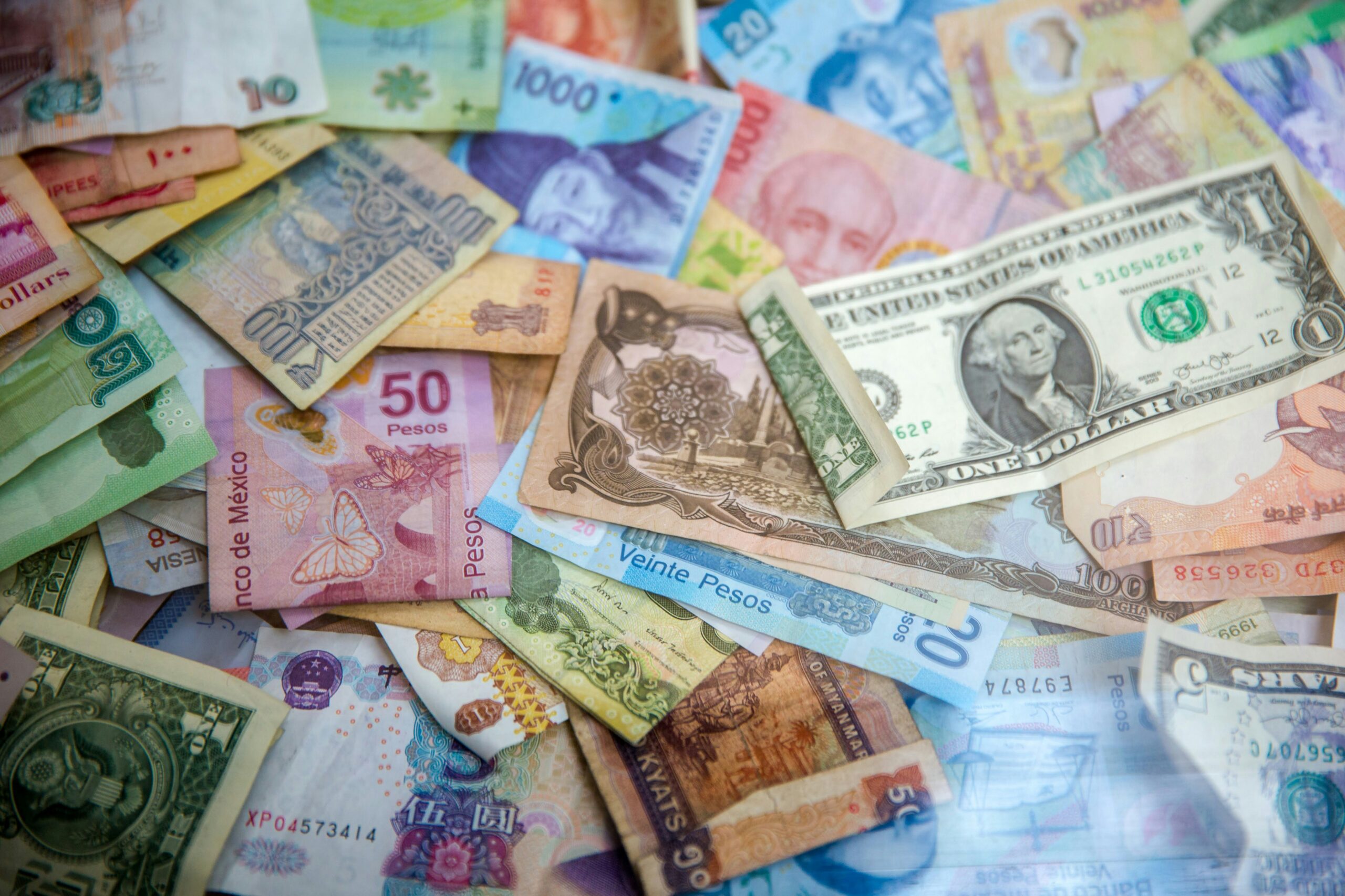A History of Money – Part 3
After exploring money history over the past centuries and millennia in Part 1 and Part 2, the final entry in our series unveils pivotal transformations in the realm of finance. As a matter of fact, the journey through history not only illuminates the origins of modern banking systems but also heralds the advent of digital currencies. In other words, this section serves as a comprehensive exploration of how money has metamorphosed over time.
Without a doubt, understanding the evolution of banking institutions and monetary policy is crucial in grasping the intricate workings of the global economy. For instance, the emergence of central banking marked a significant milestone in financial history, shaping economic landscapes worldwide. In addition, the transition from commodity-based money to fiat currency reflects a paradigm shift in monetary systems, altogether redefining the dynamics of trade and commerce.
Furthermore, as we delve into the realm of digital currency and cryptocurrency, it becomes evident that technological advancements are reshaping the future of money. In light of the rise of blockchain technology, the financial sector is witnessing unprecedented innovation and disruption. Accordingly, this section aims to provide insights into the intersection of finance and technology, offering a glimpse into the future of monetary systems.
The Evolution of Banking Systems
The evolution of banking systems is a testament to humanity’s ongoing quest for efficient financial management and economic organization. From ancient civilizations to the modern era, banking institutions have played pivotal roles in facilitating trade, commerce, and wealth accumulation.
Emergence of Banking Institutions
In ancient times, banking practices were rudimentary, often centered around temples and palaces that served as de facto banks. As a matter of fact, these early institutions provided secure storage for valuables, including precious metals and commodities, and offered loans to merchants and traders.
Consequently, the concept of banking evolved gradually, with merchants and traders organizing themselves to manage financial transactions more efficiently. During the medieval period, European cities witnessed the rise of early banking practices, such as money lending and currency exchange, conducted by private individuals and moneychangers, eventually leading to modern stock markets.
For instance, the Medici Bank, established in Florence during the 15th century, exemplified the transition to formal banking institutions. In addition to providing financial services, the Medici Bank facilitated international trade and financed large-scale projects, contributing to the economic prosperity of Renaissance Europe.
Development of Central Banks
The establishment of central banks marked a significant milestone in the evolution of modern banking. Generally, central banks are entrusted with regulating monetary policy, issuing currency, and ensuring the stability of the financial system.
Albeit, the Bank of England, founded in 1694, is widely regarded as the world’s first central bank. Similarly, the Federal Reserve System, established in the United States in 1913, aimed to address issues of financial instability and provide a lender of last resort during economic crises.
Regardless of their specific mandates, central banks play crucial roles in managing inflation, controlling interest rates, and safeguarding the stability of the banking sector. However, the functions and powers of central banks may vary from one country to another, depending on economic conditions and governmental policies.
Criticism of central banks often revolves around concerns regarding their influence over monetary policy and the broader economy. As a matter of fact, critics argue that central banks’ actions, such as setting interest rates and controlling the money supply, can have unintended consequences. For instance, some argue that central banks’ efforts to stimulate economic growth through low interest rates may lead to inflation or asset bubbles. In addition, there are concerns about the lack of transparency and accountability in central banks’ decision-making processes. Furthermore, central banks have been accused of exacerbating income inequality by implementing policies that primarily benefit financial institutions and wealthy individuals. Despite these criticisms, central banks play a crucial role in maintaining financial stability and managing the economy, and their actions continue to be closely scrutinized by policymakers, economists, and the public alike.
Rise of Fiat Currency
Fiat currency was established as money by government regulation or law. It became a pivotal development in monetary systems. Its emergence marked a significant departure from the gold standard, where currencies were backed by physical assets like gold. In other words, fiat currency derives its value not from any intrinsic worth or guarantee of redemption but from the trust and confidence placed in the issuing authority. The transition to fiat currency granted governments greater flexibility in managing monetary policy to stimulate economic growth and stability. Sometimes more and sometimes less successfully.
The Bretton Woods Agreement of 1944 played a crucial role in shaping the modern monetary landscape. The agreement established the U.S. dollar as the world’s primary reserve currency. In addition, other currencies were pegged to the dollar, which was itself backed by gold held by the United States. Ultimately, the collapse of the Bretton Woods system in the early 1970s led to the complete transition to fiat currencies, wherein their values are determined by supply and demand dynamics in the market. This shift marked a pivotal moment in the history of money, fundamentally altering the global financial system.
Equally noteworthy is the role of central banks in managing fiat currencies. Central banks gained significant autonomy in setting interest rates, controlling money supply, and intervening in financial markets to achieve domestic economic objectives. Regardless of the controversies surrounding fiat currency, its adoption facilitated economic growth, global trade, and financial stability in the modern era.
Overall, the rise of fiat currency represents a crucial evolution in the history of money, shaping the economic landscape of nations and influencing global financial systems for decades to come.
Pros and Cons of Fiat Currency
Fiat currency has its advantages and disadvantages in the realm of monetary systems. In theory, fiat currencies offer governments greater flexibility in managing monetary policy to stimulate economic growth and stability. For instance, central banks can adjust interest rates and money supply to counter economic downturns. However, fiat currencies are susceptible to inflationary pressures. The unlimited printing of money by central banks can lead to a decrease in purchasing power over time. Additionally, the lack of intrinsic value makes fiat currencies vulnerable to sudden devaluation or loss of confidence.
Despite these drawbacks, fiat currencies have facilitated economic transactions and global trade on a scale never seen before. Another advantage is the ease of transaction and widespread acceptance of fiat currencies in both domestic and international markets.
However, the reliance on fiat currencies also poses risks, such as financial instability and currency crises. In light of these challenges, some argue for a return to commodity-backed currencies like the gold standard. Nevertheless, the debate continues, with proponents and critics alike debating the merits and drawbacks of fiat currency systems.
Fiat currency has reshaped the modern monetary landscape, offering unprecedented flexibility and convenience but also introducing new challenges and vulnerabilities. Nonetheless, its role in facilitating economic growth and global trade cannot be overstated.
Advent of Digital Currency and Crypto
The advent of digital currency and cryptocurrencies marks a significant shift in the landscape of monetary transactions. With the rapid advancement of blockchain technology in recent years, digital currencies have emerged as alternative forms of money, challenging traditional financial systems. These digital currencies operate independently of central authorities, such as governments or banks, allowing for decentralized financial transactions. This decentralization is a fundamental characteristic of cryptocurrencies, enabling peer-to-peer transactions without the need for intermediaries. In other words, users can directly exchange digital assets without relying on traditional banking institutions.
One notable example of digital currency is cryptocurrency, which utilizes cryptographic techniques to secure financial transactions and control the creation of new units. Bitcoin, introduced in 2009, is perhaps the most well-known cryptocurrency, pioneering the concept of decentralized digital cash. Cryptocurrencies like Bitcoin operate on blockchain technology, a distributed ledger system that records all transactions across a network of computers. This transparent and immutable ledger ensures the integrity and security of transactions, providing users with greater trust and confidence in the digital currency ecosystem.
Furthermore, the adoption of digital currencies offers several advantages over traditional fiat currencies. Digital currencies can enable faster and cheaper cross-border transactions, eliminating the need for costly intermediaries and reducing transaction times. Additionally, digital currencies provide greater financial inclusion by enabling access to banking services for individuals who are underserved or unbanked. However, despite the numerous benefits, digital currencies also pose challenges, including concerns about security, volatility, and regulatory uncertainty. Nevertheless, the evolution of digital currency continues to shape the future of money, with ongoing developments in blockchain technology and cryptocurrency innovations.
Final Thoughts
Money history is a fascinating journey that spans millennia, reflecting the evolution of human civilization. Money has undergone significant transformations throughout its history, from bartering systems in ancient societies to the digital currencies of today. Each development has shaped the way we conduct transactions and interact with the financial system. Furthermore, the emergence of digital currencies and cryptocurrencies represents a new chapter in the story of money. We will keep a close eye on cryptocurrency, lets see what the future holds.
Not to mention, the future of money is likely to be marked by further innovations in digital technology and financial systems. For instance, advancements in blockchain technology hold the potential to revolutionize various industries and streamline financial processes. In addition, the ongoing debate surrounding the role of central banks and governments in regulating digital currencies will continue to shape the monetary landscape. Altogether, it is clear that the history of money is far from over, with new developments and opportunities on the horizon.
Sources And Further Reading:
Investopedia, “What Is Money? Definition, History, Types, and Creation”
Bank of England, “How has money changed over time?”
Britannica, “A Brief (and Fascinating) History of Money”
The British Museum, “Money”
International Monetary Fund, Harold James, “Lucre’s Allure”
The Independent, “Money, money, money: The history of cash”
Written with Support from ChatGPT by OpenAI

